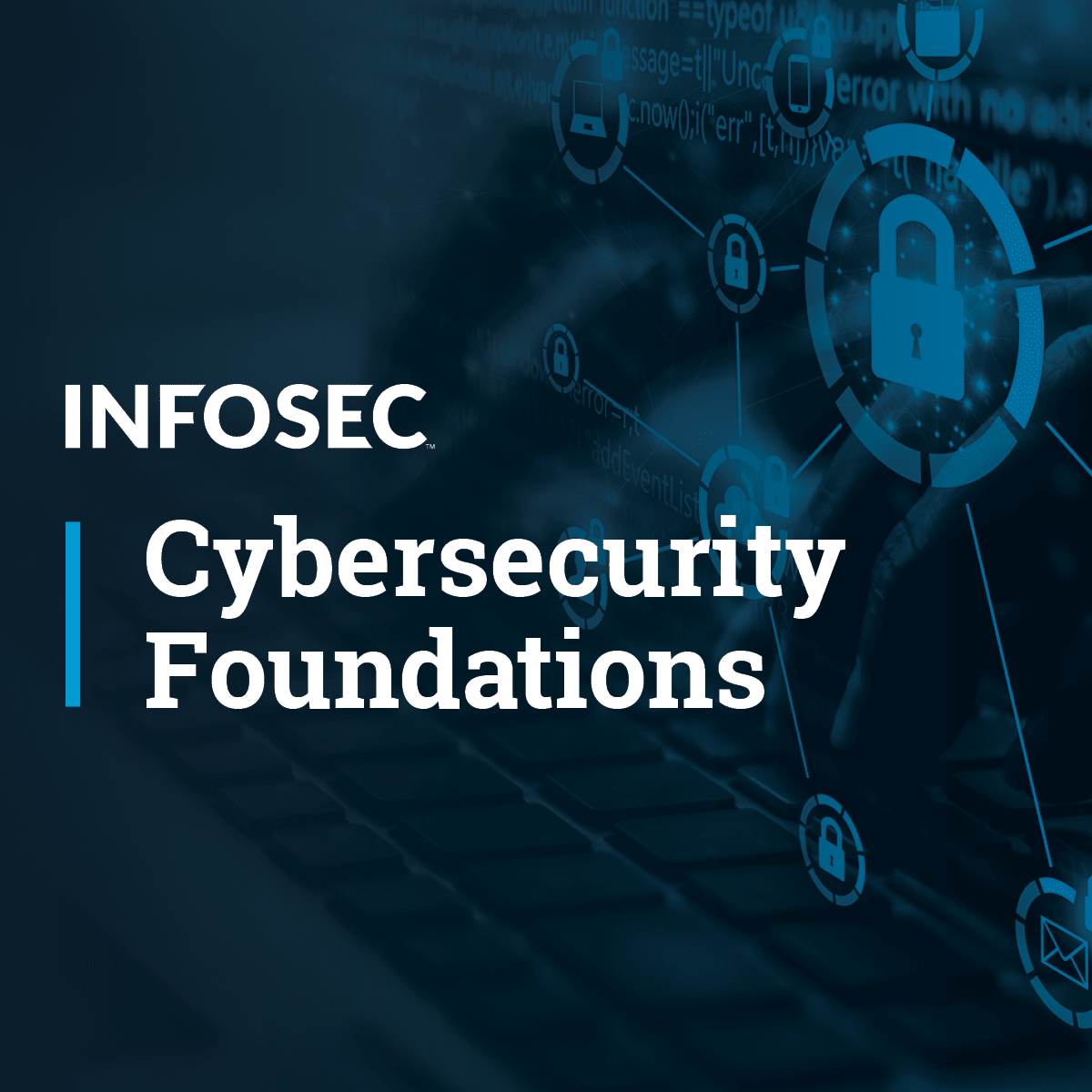Penetration Tester
Penetration Tester
A Penetration Tester, often called an ethical hacker, plays a crucial role in cybersecurity. Their primary function is to simulate cyberattacks against an organization's computer systems, networks, and web applications to identify security weaknesses before malicious actors can exploit them. Think of them as authorized burglars, testing the locks and alarms to see where vulnerabilities lie.
This career involves a unique blend of technical expertise, creative problem-solving, and a strong ethical compass. Penetration testers get to explore systems deeply, uncovering hidden flaws and understanding how attackers think. The constant evolution of technology and threats means the learning never stops, making it an intellectually stimulating field for those with a persistent curiosity and a desire to stay ahead of the curve.
What is Penetration Testing?
Defining the Role and Its Purpose
Penetration testing is a methodical approach to evaluating the security of IT infrastructure by safely trying to exploit vulnerabilities. These vulnerabilities may exist in operating systems, services, application flaws, improper configurations, or risky end-user behavior. Such assessments are useful for validating the efficacy of defensive mechanisms, as well as end-user adherence to security policies.
The core purpose is not just to find flaws but to understand the potential business impact if those flaws were exploited by attackers. Testers provide detailed reports outlining discovered vulnerabilities, the methods used to exploit them, the potential impact, and actionable recommendations for remediation. This helps organizations prioritize security investments and strengthen their overall defense posture.
Ultimately, penetration testing helps organizations build resilience against real-world attacks. By proactively identifying and addressing weaknesses, companies can reduce their attack surface, protect sensitive data, maintain customer trust, and comply with regulatory requirements.
Ethical Hacking vs. Malicious Hacking
The key distinction between a penetration tester (ethical hacker) and a malicious hacker lies in intent and authorization. Penetration testers operate with explicit permission from the organization they are testing. Their goal is constructive: to improve security by finding vulnerabilities before criminals do.
Malicious hackers, often called black hat hackers, act illegally and without permission. Their motivations vary widely, ranging from financial gain and espionage to disruption or simple notoriety. They exploit vulnerabilities for personal benefit or to cause harm, disregarding legal and ethical boundaries.
Ethical hackers adhere to a strict code of conduct and legal agreements, ensuring their actions do not cause undue disruption or damage to the systems they test. They document their findings meticulously and work collaboratively with the organization to fix the identified issues, contributing positively to the security ecosystem.
Objectives: Finding Vulnerabilities, Improving Security
The primary objective of penetration testing is to identify security vulnerabilities across an organization's digital assets. This includes searching for weaknesses in network infrastructure, servers, web applications, mobile devices, APIs, and even human elements through social engineering tests.
Beyond mere identification, testers assess the severity of these vulnerabilities. They demonstrate how an attacker could potentially exploit them to gain unauthorized access, steal data, disrupt services, or cause other harm. This contextualizes the risk and helps organizations understand the real-world implications.
The final objective is to drive security improvements. Penetration test reports provide clear, prioritized recommendations for fixing the identified vulnerabilities. This feedback loop allows organizations to enhance their defenses, refine security policies, and train staff, leading to a more robust security posture over time.
A Brief History of Cybersecurity Evolution
The concept of testing system security emerged alongside early computer networks in the 1960s and 1970s. Initially, it was often informal, conducted by system administrators or researchers exploring system limits. The infamous Morris Worm in 1988 highlighted the potential for widespread disruption, accelerating the need for formalized security practices.
The rise of the internet in the 1990s dramatically increased the attack surface for organizations, leading to the commercialization of security services. Penetration testing became a distinct discipline, moving from government and military contexts into the corporate world as businesses recognized the need for proactive defense.
Over the last two decades, the field has matured significantly. Standardized methodologies, specialized tools, and professional certifications emerged. The increasing sophistication of cyber threats and the growing reliance on digital infrastructure continue to drive demand for skilled penetration testers, making it a dynamic and critical profession.
Key Responsibilities of a Penetration Tester
Conducting Security Assessments and Simulated Attacks
A core responsibility is performing authorized security assessments. This involves systematically probing systems, networks, and applications for weaknesses. Testers use a variety of tools and techniques, mimicking the actions of potential attackers to uncover exploitable flaws.
Simulated attacks range from automated scans to highly targeted manual testing. Testers might attempt to bypass firewalls, exploit known software bugs, crack passwords, or trick employees into revealing sensitive information (social engineering). The scope and rules of engagement are carefully defined beforehand to ensure testing is conducted safely and ethically.
These activities require a deep understanding of how systems work and how they can be broken. Testers must think creatively, constantly adapting their approach based on the target environment and the defenses encountered.
Documenting Vulnerabilities and Remediation Strategies
Finding vulnerabilities is only part of the job; clear documentation is equally vital. Penetration testers must meticulously record their findings, detailing each vulnerability discovered, the steps taken to exploit it, and the potential impact on the organization.
Effective reports are clear, concise, and actionable. They prioritize vulnerabilities based on risk, allowing organizations to focus on the most critical issues first. Technical details are necessary, but reports must also communicate the business implications to non-technical stakeholders.
Beyond simply listing problems, testers provide practical recommendations for remediation. This might involve suggesting software patches, configuration changes, architectural improvements, or enhanced security awareness training. The goal is to provide a clear roadmap for strengthening defenses.
Collaborating with IT and Security Teams
Penetration testers rarely work in isolation. Effective testing involves close collaboration with the organization's IT and security teams. This partnership begins before testing, defining scope and objectives, and continues afterward to discuss findings and remediation.
During testing, communication might be necessary to clarify system configurations or to report critical vulnerabilities immediately. After the assessment, testers often present their findings to technical teams, explaining the vulnerabilities and remediation steps in detail.
This collaborative approach ensures that the testing process is smooth and that the results are properly understood and acted upon. It helps build trust and positions the penetration tester as a partner in improving the organization's security posture, rather than just an external auditor.
Staying Updated on Emerging Threats and Tools
The cybersecurity landscape changes constantly. New vulnerabilities are discovered daily, attackers develop novel techniques, and new technologies create fresh attack surfaces. A critical responsibility for penetration testers is continuous learning and staying abreast of these developments.
This involves reading security blogs and research papers, participating in online communities, attending conferences, and experimenting with new tools and techniques in a lab environment. Staying current ensures that testers can effectively simulate modern threats and provide relevant advice.
Many testers specialize in specific areas, such as web applications, cloud security, or IoT devices, requiring them to maintain deep knowledge within their chosen niche. This dedication to ongoing education is essential for maintaining effectiveness and relevance in the field.
These courses provide insights into current threats and defensive measures, crucial for staying updated.
Core Skills and Competencies
Essential Technical Skills
Penetration testing demands a strong technical foundation. A deep understanding of computer networking principles, including TCP/IP, DNS, routing, and common protocols, is essential for analyzing traffic and identifying network-level vulnerabilities. Familiarity with various operating systems, particularly Windows and Linux, is also crucial for navigating systems and exploiting OS-specific weaknesses.
Proficiency in scripting languages like Python, Bash, or PowerShell allows testers to automate tasks, customize tools, and develop custom exploits. Knowledge of web technologies (HTML, JavaScript, SQL, common frameworks) is vital for web application testing, while understanding cloud platforms (AWS, Azure, GCP) is increasingly important.
Familiarity with security concepts like cryptography, authentication mechanisms, and access controls is fundamental. Knowing how these systems are supposed to work helps testers identify when they are implemented incorrectly or can be bypassed.
These courses cover fundamental technical areas relevant to penetration testing.
Key Soft Skills
Technical prowess alone isn't enough. Penetration testers need strong problem-solving skills to analyze complex systems, identify subtle flaws, and devise creative exploitation methods. Analytical thinking is critical for understanding how different vulnerabilities might be chained together for greater impact.
Excellent communication skills, both written and verbal, are necessary for documenting findings clearly and presenting them effectively to technical and non-technical audiences. Testers must articulate complex technical issues and their business risks in an understandable way.
Ethical integrity is paramount. Testers handle sensitive information and access critical systems, requiring trustworthiness and adherence to strict ethical guidelines and legal agreements. Curiosity, persistence, and attention to detail are also key traits for success in uncovering hidden vulnerabilities.
Valuable Certifications
While not always mandatory, certifications can validate skills and knowledge, often being preferred or required by employers. Several reputable certifications exist in the penetration testing field. The Offensive Security Certified Professional (OSCP) is highly regarded for its hands-on, practical exam that requires candidates to compromise systems in a lab environment.
The Certified Ethical Hacker (CEH) from EC-Council provides a broader overview of ethical hacking tools and techniques. CompTIA's PenTest+ focuses on the practical aspects of penetration testing and vulnerability management across various environments.
More advanced certifications like Offensive Security's OSCE or GIAC's GPEN and GXPN target specific, higher-level skills. While certifications enhance a resume, practical experience and demonstrated skills often carry more weight in hiring decisions.
These courses can help prepare for industry certifications like CompTIA PenTest+ and CEH.
Familiarity with Essential Tools
Penetration testers rely on a diverse toolkit to perform assessments efficiently. Familiarity with common tools is essential. Network scanners like Nmap are fundamental for discovering hosts and services on a network.
Packet analysis tools like Wireshark are crucial for inspecting network traffic and understanding communication protocols. Vulnerability scanners such as Nessus or OpenVAS help automate the detection of known weaknesses.
Exploitation frameworks like Metasploit provide a vast library of exploits and payloads for compromising systems. Web application proxies like Burp Suite or OWASP ZAP are indispensable for inspecting and manipulating web traffic during application tests. Proficiency with these and other specialized tools is a hallmark of an effective penetration tester.
These courses focus on specific tools commonly used in penetration testing.
These books offer deep dives into penetration testing methodologies and tools.
Formal Education Pathways
Relevant Undergraduate Degrees
A bachelor's degree in Computer Science, Cybersecurity, or a related field like Information Technology often provides a strong foundation for a penetration testing career. These programs typically cover essential topics such as operating systems, networking, programming, algorithms, and database management.
Computer Science degrees offer broad technical knowledge, emphasizing programming and theoretical concepts. Cybersecurity programs are more specialized, focusing directly on security principles, cryptography, network defense, and ethical hacking methodologies. Both pathways can equip students with the fundamental knowledge needed.
While a degree is a common entry point, it's not the only path. Practical skills and experience are highly valued in this field. Supplementing academic learning with hands-on practice and certifications is crucial, regardless of the degree pursued.
Graduate Programs and Research
For those seeking deeper specialization or aiming for research or leadership roles, a master's degree or Ph.D. in Cybersecurity or Computer Science can be beneficial. Graduate programs often offer advanced courses in areas like malware analysis, reverse engineering, advanced penetration testing techniques, cryptography, and security management.
Research opportunities at the graduate level allow students to contribute to the cutting edge of cybersecurity knowledge. This can involve developing new attack or defense techniques, analyzing emerging threats, or exploring the security implications of new technologies like AI or quantum computing.
A graduate degree can open doors to roles in academia, research institutions, or specialized positions within government or industry that require deep technical expertise. However, for many practitioner roles, extensive hands-on experience might be valued more highly than an advanced degree.
Integrating Certifications into Academia
Recognizing the industry's emphasis on practical skills and certifications, many universities are integrating certification preparation into their curricula. Some cybersecurity degree programs align their coursework with certifications like CompTIA Security+, Network+, or even CEH and CISSP.
This approach helps bridge the gap between theoretical academic knowledge and practical industry demands. Students graduate not only with a degree but also potentially with industry-recognized credentials, making them more competitive in the job market.
Even if certifications aren't formally part of the curriculum, universities often provide resources or encourage students to pursue them independently alongside their studies. This blend of formal education and vocational training reflects the hybrid nature of skills required in cybersecurity.
Importance of Internships and Labs
Theoretical knowledge forms the base, but practical experience is where skills are truly honed. Internships provide invaluable real-world experience, allowing students to apply their learning in a professional setting, work alongside experienced practitioners, and understand the day-to-day realities of a cybersecurity role.
University labs, cyber ranges, and participation in Capture The Flag (CTF) competitions offer safe environments to practice penetration testing techniques. These hands-on experiences allow students to experiment with tools, exploit simulated vulnerabilities, and develop practical problem-solving skills without the risks associated with testing live systems.
Building a portfolio of projects, CTF write-ups, or contributions to open-source security tools can significantly strengthen a candidate's profile, demonstrating practical aptitude beyond academic qualifications. Employers highly value candidates who can show tangible evidence of their hands-on skills.
Online Learning and Self-Directed Training
Transitioning via Online Education
For individuals seeking a career change or those without a traditional computer science background, online learning offers a flexible and accessible pathway into penetration testing. Numerous online platforms provide courses covering foundational IT skills, networking, operating systems, scripting, and specialized cybersecurity topics.
Online courses allow learners to study at their own pace, fitting education around existing work or personal commitments. This route requires significant self-discipline and motivation, but it's entirely feasible to build the necessary skills through dedicated self-study and online resources.
Making the transition requires commitment. It's not just about watching videos; active learning through practice labs and projects is essential. While the path might seem daunting, breaking it down into smaller, manageable learning goals can make the journey less overwhelming. Remember that many successful professionals in this field are self-taught or transitioned from other careers.
OpenCourser provides a vast catalog to browse cybersecurity courses and find resources tailored to your learning goals.
These introductory courses are great starting points for beginners available online.
Balancing Theory with Hands-on Labs
Effective learning in penetration testing requires a balance between understanding theoretical concepts and applying them in practice. Online courses often provide theoretical knowledge, but supplementing this with hands-on labs is crucial for developing practical skills.
Many online platforms offer virtual lab environments where learners can practice using tools like Nmap, Metasploit, and Wireshark against simulated targets. Participating in online Capture The Flag (CTF) competitions (like those found on Hack The Box or TryHackMe) provides realistic scenarios to test skills in identifying and exploiting vulnerabilities.
Setting up a personal home lab using virtual machines (e.g., VirtualBox, VMware) allows for safe experimentation with different operating systems, tools, and vulnerable applications. This hands-on practice solidifies theoretical understanding and builds the muscle memory needed for real-world assessments.
These courses emphasize hands-on learning and practical application.
Building a Portfolio with CTFs and Projects
For self-taught learners or career changers, a strong portfolio demonstrating practical skills can be more persuasive than traditional credentials alone. Participating in CTFs and meticulously documenting the solutions (write-ups) showcases problem-solving abilities and technical proficiency.
Contributing to open-source security projects, developing custom tools or scripts, or discovering and responsibly disclosing vulnerabilities (bug bounties) are excellent ways to build credibility. Setting up and documenting home lab projects, such as building a secure network or analyzing malware samples, also adds value.
Your portfolio serves as tangible proof of your skills and passion for the field. It gives potential employers concrete examples of your capabilities beyond what's listed on a resume. OpenCourser allows you to manage lists of completed courses and projects, which can be shared as part of your portfolio.
Supplementing Education with Specialized Courses
Whether you have a formal degree or are self-taught, the learning never stops. Online courses offer opportunities to deepen knowledge in specific areas or acquire new skills as the field evolves. You might take courses focused on advanced web application testing, cloud security, mobile security, reverse engineering, or specific tools.
Specialized training can help you stand out in a competitive job market or prepare for specific roles or certifications. As new technologies like AI and IoT become more prevalent, targeted online courses can help you stay ahead of the curve and understand their security implications.
Choosing courses from reputable instructors and platforms is important. Look for courses with significant hands-on components and positive reviews from other learners. OpenCourser's detailed course pages, including reviews and syllabi, can help you select high-quality, relevant training.
These courses offer more specialized training in ethical hacking techniques.
Career Progression in Penetration Testing
Entry-Level Roles
Many penetration testers start their careers in broader IT or security roles before specializing. Positions like Security Analyst, Network Administrator, or Systems Administrator provide foundational knowledge of IT infrastructure and security principles.
Entry-level roles directly related to offensive security might include Junior Penetration Tester or Vulnerability Analyst. These positions typically involve working under senior testers, performing routine scans, assisting with assessments, and learning documentation standards. The focus is on building practical skills and understanding testing methodologies.
Getting the first role often requires demonstrating foundational knowledge (perhaps through certifications like Security+ or Network+) and hands-on aptitude, potentially shown via a portfolio of CTF write-ups or home lab projects.
Mid-Career Specialization Paths
As penetration testers gain experience, they often specialize in particular domains. Common specializations include network penetration testing, focusing on infrastructure devices and protocols; web application security, targeting websites and APIs; or mobile application testing for iOS and Android platforms.
Emerging areas like cloud security (testing AWS, Azure, GCP environments), IoT (Internet of Things) security, and OT (Operational Technology) security offer further specialization paths. Some testers focus on specific techniques like social engineering or red teaming, which involves more comprehensive, objective-based adversary simulation.
Specialization allows testers to develop deep expertise, making them highly valuable in their chosen niche. It often involves pursuing advanced training and certifications relevant to the area of focus.
These courses cover more specialized areas within penetration testing.
This book is a classic resource for web application security assessment.
Leadership Roles: Management vs. Technical Expertise
Experienced penetration testers can progress into leadership roles. One path involves moving into management, leading teams of testers, managing client engagements, developing testing methodologies, and overseeing security assessment programs. This requires strong organizational, communication, and people management skills.
Alternatively, testers can pursue a technical leadership path, becoming principal consultants or security researchers. These roles focus on deep technical expertise, tackling the most complex assessments, mentoring junior testers, developing new tools and techniques, and contributing thought leadership through research and presentations.
Both paths offer significant career advancement opportunities. The choice often depends on individual strengths and interests – whether one prefers managing people and programs or focusing on advanced technical challenges.
Transition Opportunities to Related Fields
The skills and experience gained as a penetration tester are highly transferable to other cybersecurity domains. Many testers transition into roles like Cybersecurity Architect, designing secure systems and infrastructure, or Security Engineer, implementing and managing security controls.
Other potential paths include Incident Response, investigating security breaches; Threat Intelligence, analyzing attacker tactics and motivations; or Security Management, overseeing broader security programs. Some may move into security consulting, compliance auditing, or product security roles.
The deep understanding of vulnerabilities and attacker methodologies gained through penetration testing provides a unique perspective that is valuable across the cybersecurity landscape, offering diverse long-term career options.
Ethical and Legal Considerations
Importance of Legal Authorization
The absolute cornerstone of ethical hacking is obtaining explicit, written authorization before conducting any testing activities. Penetration testing involves techniques that, without permission, would constitute illegal hacking under laws like the Computer Fraud and Abuse Act (CFAA) in the United States and similar legislation globally.
Authorization must clearly define the scope of the assessment: which systems, networks, or applications are included, what types of testing are permitted (e.g., social engineering, denial-of-service tests), and the timeframe for the engagement. Operating outside this defined scope can lead to serious legal consequences.
Testers must understand and respect the boundaries set by the client. Contracts and rules of engagement documents are crucial for establishing these boundaries and protecting both the tester and the client organization.
Handling Sensitive Data Responsibly
During an assessment, penetration testers may gain access to sensitive or confidential information, such as customer data, intellectual property, or internal communications. Handling this data responsibly and ethically is paramount.
Testers must take precautions to minimize the amount of sensitive data they access or exfiltrate, only retrieving what is necessary to demonstrate a vulnerability's impact. Any data collected must be securely stored, handled according to agreed-upon protocols, and securely destroyed or returned to the client after the engagement.
Maintaining confidentiality is crucial. Findings should only be disclosed to authorized individuals within the client organization. Breaching confidentiality can damage trust and have severe legal and reputational repercussions.
Global Variations in Cybersecurity Laws
Cybersecurity laws and regulations vary significantly across different countries and regions. Penetration testers, especially those working for international clients or testing systems located abroad, must be aware of the legal landscape in relevant jurisdictions.
Activities permitted in one country may be illegal in another. Data privacy laws, such as the GDPR in Europe, impose strict requirements on handling personal data, which can impact testing methodologies and data handling procedures.
Understanding these variations is crucial for ensuring compliance and avoiding legal pitfalls. Consulting legal counsel familiar with international cybersecurity law may be necessary for complex cross-border engagements.
Ethical Dilemmas in Vulnerability Disclosure
Penetration testers may occasionally face ethical dilemmas. For instance, discovering a critical vulnerability in a third-party product used by the client raises questions about disclosure – who should be notified, and when? Balancing the client's immediate risk with the broader need to fix the vulnerability for all users requires careful judgment.
Another dilemma might arise if testing uncovers evidence of ongoing illegal activity unrelated to the authorized scope. Testers must navigate their contractual obligations, ethical responsibilities, and potential legal reporting requirements.
Adhering to established ethical frameworks, clear communication with the client, and sometimes seeking legal advice are essential for navigating these complex situations responsibly.
These books delve into risk assessment and management, touching upon legal and ethical frameworks.
Industry Trends Shaping Penetration Testing
Impact of AI and Machine Learning
Artificial intelligence (AI) and machine learning (ML) are increasingly impacting penetration testing, both offensively and defensively. Attackers are exploring AI/ML for automating reconnaissance, crafting sophisticated phishing attacks, and generating polymorphic malware that evades traditional signature-based detection.
Conversely, defenders are using AI/ML for enhanced threat detection, anomaly analysis, and automated incident response. Penetration testers need to understand these evolving AI-driven attack techniques to simulate them effectively. They also need to learn how to test the security of AI/ML systems themselves, as these can also have vulnerabilities.
AI can also augment penetration testing tools, helping to automate vulnerability discovery, prioritize findings, and even suggest exploitation paths. Testers who embrace AI/ML tools and understand their implications will be better equipped for the future.
These courses explore the intersection of AI/ML and security.
Growing Demand for Cloud and IoT Security Testing
As organizations migrate workloads to the cloud and deploy vast numbers of Internet of Things (IoT) devices, the demand for specialized penetration testing in these areas is surging. Cloud environments (AWS, Azure, GCP) have unique configurations, services, and security models that require specific testing expertise.
Testers need to understand cloud architecture, identity and access management (IAM), serverless functions, container security, and cloud-specific vulnerabilities. Misconfigurations in cloud services are a common source of breaches, making cloud security assessments critical.
IoT devices, ranging from smart home gadgets to industrial sensors, often lack robust security features, creating significant risks. Testing IoT ecosystems involves analyzing device hardware, firmware, communication protocols, and associated cloud backends, requiring a diverse skillset.
Zero Trust Architectures and Implications
The adoption of Zero Trust security models is changing how organizations approach defense, which in turn impacts penetration testing. Zero Trust operates on the principle of "never trust, always verify," meaning access controls are strict, and verification is required regardless of whether a user or device is inside or outside the traditional network perimeter.
Testing Zero Trust environments requires different approaches. Testers must focus more on identity verification processes, micro-segmentation controls, device posture checks, and continuous monitoring systems. Techniques like lateral movement might become more challenging but remain critical to assess.
Penetration testers need to understand Zero Trust principles and how they are implemented to effectively evaluate the security posture of organizations adopting this model. Testing focuses shift towards identity, endpoint security, and granular access policies.
Market Growth and Hiring Trends
The market for penetration testing services continues to grow robustly, driven by increasing cyber threats, regulatory compliance requirements (like PCI DSS and HIPAA), and greater board-level awareness of cybersecurity risks. Data from sources like the U.S. Bureau of Labor Statistics indicates strong growth projections for information security analysts, a category that includes penetration testers.
Hiring trends show high demand for skilled testers, particularly those with expertise in cloud security, application security, and IoT. Companies are hiring both in-house teams and engaging third-party consulting firms. There's also a growing need for testers who can effectively communicate risk to business leaders.
While the field is competitive, individuals with strong technical skills, practical experience (often demonstrated through certifications like OSCP and a portfolio), and good communication abilities are highly sought after. Continuous skill development is essential to remain competitive in this evolving job market.
Global Opportunities and Challenges
Demand Variations Across Regions
The demand for penetration testers varies globally. Major economic hubs in North America, Europe, and parts of Asia-Pacific generally show the highest demand due to the concentration of large enterprises, stringent regulations, and higher levels of cybersecurity maturity.
However, demand is growing rapidly in other regions as digital transformation accelerates and awareness of cyber risks increases. Developing economies may offer unique opportunities but might also have less mature markets for security services.
Understanding regional market dynamics, including common threats, industry focuses (e.g., finance, healthcare), and regulatory landscapes, can help testers identify opportunities globally.
Remote Work and Cross-Border Engagements
Penetration testing often lends itself well to remote work, especially for assessments focusing on externally facing systems or cloud environments. This opens up opportunities for testers to work for organizations located anywhere in the world without relocating.
However, cross-border engagements can introduce complexities. Time zone differences, language barriers, and varying legal and regulatory requirements (as discussed earlier) must be carefully managed. Secure remote access methods and clear communication protocols are essential for successful remote testing.
The trend towards remote work has broadened the talent pool for companies and increased flexibility for testers, but it requires diligence in managing the associated logistical and legal challenges.
Cultural and Regulatory Barriers
Working internationally can involve navigating cultural differences in communication styles and business practices. Building trust and rapport with clients from different cultural backgrounds requires sensitivity and adaptability.
Regulatory barriers can also pose challenges. Some countries may have specific licensing requirements for security professionals, data localization laws that restrict data transfer across borders, or regulations that impact the types of testing techniques permitted.
Thorough research into the target country's specific legal and cultural context is necessary before undertaking international engagements to ensure compliance and smooth collaboration.
Language and Certification Recognition
While English is widely used in the global cybersecurity community, language barriers can still exist, particularly when communicating with non-technical stakeholders or interpreting documentation in local languages. Proficiency in multiple languages can be a significant advantage for testers working internationally.
The recognition and perceived value of specific certifications can also vary by region. While certifications like OSCP, CISSP, and CEH generally have global recognition, local or regional certifications might be preferred or required in some markets.
Testers considering international work should research which certifications hold the most weight in their target regions and be prepared to potentially acquire region-specific credentials if necessary.
Getting Started and Setting Expectations
Acknowledging the Challenge, Embracing the Journey
Embarking on a career as a penetration tester is a challenging yet rewarding endeavor. It demands a significant investment in learning diverse technical skills, developing an analytical mindset, and committing to continuous education in a rapidly changing field. It's crucial to set realistic expectations; mastery doesn't happen overnight.
If you're considering this path, especially as a career transition, be prepared for moments of frustration when concepts seem difficult or progress feels slow. This is normal. Celebrate small victories, stay persistent, and remember that even experienced professionals are constantly learning. The key is consistent effort and a genuine passion for understanding how things work – and how they can be broken.
Don't be discouraged if you find certain areas particularly difficult. Focus on building a solid foundation in networking, operating systems, and basic security principles first. Find learning resources that match your style, whether it's online courses, books, or hands-on labs.
The OpenCourser Learner's Guide offers valuable tips on structuring your learning, staying motivated, and making the most of online educational resources.
Finding Your Starting Point
For absolute beginners, start with the fundamentals. Gain a solid understanding of computer hardware, operating systems (especially Linux), and networking basics (TCP/IP model, common protocols). Online courses covering CompTIA A+, Network+, and Security+ content provide structured introductions to these core areas.
Once you have a grasp of the basics, begin exploring introductory cybersecurity concepts and ethical hacking principles. Learn about common vulnerabilities, attack vectors, and the tools used by both attackers and defenders. Setting up a home lab with virtual machines is an excellent way to start experimenting safely.
Consider introductory courses specifically designed for ethical hacking beginners. Many focus on setting up a lab, learning basic Linux commands, and using fundamental tools like Nmap and Metasploit in controlled environments.
These courses are tailored for beginners entering the field.
The Importance of Community and Continuous Learning
The cybersecurity community is vibrant and collaborative. Engaging with others through online forums (like Reddit's r/netsecstudents or r/hacking), Discord servers, local security meetups (e.g., OWASP chapters), and conferences is invaluable. You can learn from others' experiences, ask questions, and find mentors.
Penetration testing is not a field where you learn everything once and are set for life. Technology evolves, new vulnerabilities emerge, and attacker techniques adapt. Dedication to lifelong learning is non-negotiable. Regularly read security news, follow researchers on social media, explore new tools, and practice consistently in labs or CTFs.
Embrace curiosity and view every challenge as a learning opportunity. The journey to becoming a proficient penetration tester is ongoing, fueled by a desire to understand, explore, and protect the digital world.
Frequently Asked Questions
Can penetration testers work remotely?
Yes, remote work is quite common for penetration testers, especially for external network tests, cloud security assessments, and web application testing where physical access isn't required. Many consulting firms and internal security teams offer remote positions. However, some engagements, particularly those involving internal network testing or physical security assessments, may require on-site presence.
Is programming expertise mandatory?
While deep programming expertise isn't strictly mandatory for all entry-level roles, strong scripting skills (Python, Bash, PowerShell) are highly advantageous and often expected. Scripting helps automate repetitive tasks, customize tools, and analyze data efficiently. Understanding code helps in identifying vulnerabilities in applications (source code review) and potentially developing custom exploits, becoming increasingly important for more advanced roles.
How does this role differ from cybersecurity analysts?
Penetration Testers focus on offensive security – actively trying to break into systems to find vulnerabilities. Cybersecurity Analysts typically focus on defensive security – monitoring networks and systems for malicious activity, analyzing security alerts, responding to incidents, and implementing defensive measures. While there's overlap in foundational knowledge, the day-to-day focus and methodologies differ significantly (offense vs. defense).
What industries hire the most penetration testers?
Penetration testers are in demand across various industries. Technology companies, financial services (banking, insurance), healthcare organizations (due to sensitive patient data), consulting firms specializing in security services, and government agencies are major employers. Any organization handling sensitive data or relying heavily on IT infrastructure likely needs penetration testing services, either internally or externally.
Can someone transition from system administration?
Yes, transitioning from system or network administration is a common and logical path into penetration testing. Administrators already possess valuable knowledge of operating systems, networks, and infrastructure management. Building upon this foundation by learning offensive techniques, security tools, and vulnerability assessment methodologies makes for a strong transition candidate. Many skills, like troubleshooting and understanding system configurations, are directly transferable.
What are common misconceptions about the role?
A common misconception is that penetration testing is solely about non-stop, exciting hacking like in movies. In reality, it involves significant planning, meticulous documentation, report writing, and client communication. Another misconception is that it requires being a master coder; while scripting is important, deep system and network knowledge are often more critical. Lastly, people sometimes underestimate the strict ethical and legal boundaries governing the profession – it's authorized and methodical, not reckless.
Becoming a penetration tester is a journey that demands technical skill, ethical rigor, and a commitment to continuous learning. It offers the unique challenge of thinking like an adversary to strengthen defenses, playing a vital role in protecting organizations in an increasingly complex digital world. While the path requires dedication, the intellectual stimulation and the impact you can have make it a compelling career choice for those passionate about cybersecurity.











































